End of an era: The Lamborghini Aventador (and its V12 engine) bows out
After a decade in production, the flagship raging bull is going away, and it might also be the end of the carmaker’s glorious V12 engine. Here, we take a look at Lamborghini’s most storied models leading up to the Aventador.
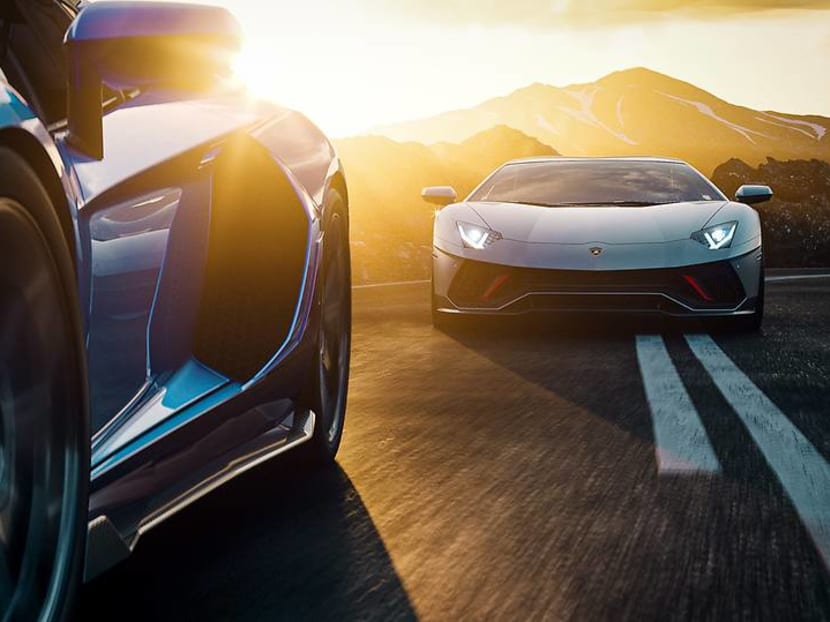
It’s very unlikely we’ll ever see a return of the Lamborghini V12 in its purest sense, owing to increasingly strict EU emissions laws. (Photo: Lamborghini)
So, you might have already read the news about the Lamborghini Aventador LP 780-4 Ultimae, a limited-edition run of 350 coupes and 250 soft-top roadsters to commemorate the end of the supercar’s decade-long run.
Making its debut on the big stage at the 2011 Geneva Motor Show (remember when big motor shows were a thing?), the Aventador was more than a worthy successor to the Murcielago, the latter being the first all-new car produced under the carmaker’s then-new owners, Audi.
The new flagship raging bull would also play host to a new V12 engine, displacing 6.5 litres and only Lamborghini’s second all-new twelve-cylinder engine in the company’s half-century of existence.
That new V12 engine, with an internal codename of L539, was intended to replace the 6.5-litre V12 used in the Murcielago, an engine that can directly trace its roots back to the 3.5-litre V12 that made its debut on Lamborghini’s first production car, the 350 GT, in 1964.
READ> The sports car that’s less expensive than a Porsche but more exotic
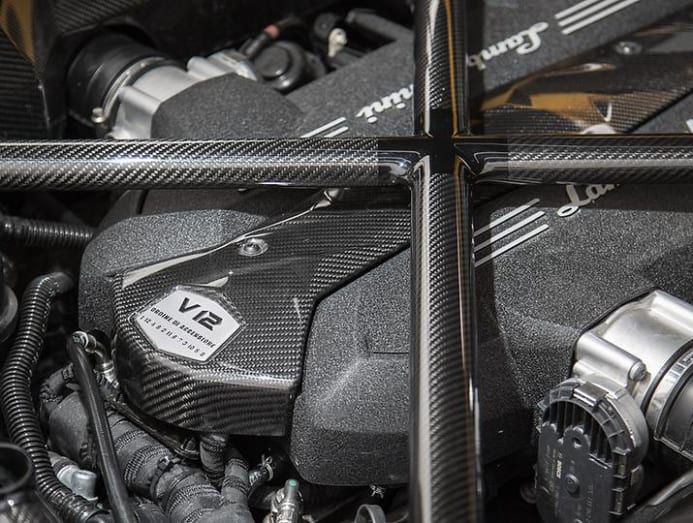
The V12 used in the Aventador, of course, is a thing of beauty. It started out in 2011 producing 700hp, and in its final form on the Ultimae cars, it produces an eye-watering 780hp.
This Ultimae’s power output is identical to that of the (also limited-edition) Aventador SVJ, a racetrack-focused version of the supercar, and it’s a fitting sendoff to one of the greatest large-capacity, multi-cylinder, naturally-aspirated engines of the modern era.
Unfortunately, it’s very unlikely we’ll ever see a return of the Lamborghini V12 in its purest sense, owing to increasingly strict EU emissions laws. While Lamborghini’s press materials are careful to not rule out the possibility of a V12 returning, it’s almost a given that should the twelve-cylinder make a comeback, it’ll have some form of downsizing, turbocharging and perhaps even a hybrid system tacked onto it.
So, we thought we’d look back through time at models from the past to bear the greatest engine Lamborghini produced.
READ> Why Lamborghini won’t restore your vintage supercar to mint condition
LAMBORGHINI 350 GT
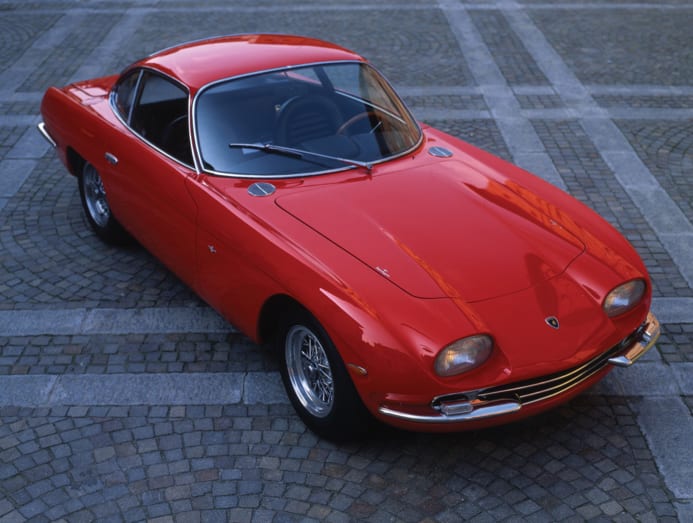
The one that started it all in 1964. If you believe the legends, company founder Ferrucio Lamborghini, then primarily a maker of tractors, was so incensed at having been snubbed by the famously cantankerous Enzo Ferrari when he brought up the topic of the poor build quality in some of the latter’s cars, he decided to start his own manufacture.
Essentially, Lamborghini wanted to out-Ferrari Ferrari in the grand tourer department. It’s probably no small coincidence that Modena, the home of Ferrari, is barely a half hour’s drive away from the stable of the raging bull over in Sant’Agata.
With that in mind, and rather at odds with the cars Lamborghini is known for making today, the 350 GT was elegantly designed (as opposed to brash), with a plush ride and even plusher interiors, but crucially without compromising performance.
The V12 Lamborghini chose for his first car displaced 3.5 litres and produced 284hp, engineered by former Ferrari engineer Giotto Bizzarrini and renowned race car engineer Gianpaolo Dallara. While its output might seem wanting in the modern context (bear in mind there are hot hatchbacks today that develop over 400hp), other aspects of its construction were incredibly advanced for its time, such as an all-aluminium construction.
So forward-looking was that engine, it saw service in Lamborghinis (albeit with numerous modernisations along the way, and ballooning in displacement from 3.5- to 6.5 litres) for some 50 years.
READ> What it’s like to drive the Ferrari Roma alongside a Singaporean pro racer
LAMBORGHINI MIURA
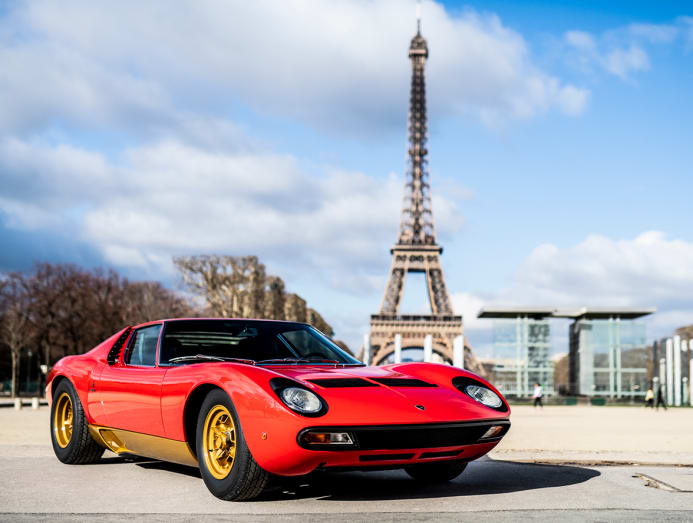
From a design and philosophy standpoint, the Miura, when it made its debut in prototype form at the 1966 Turin Motor Show, was completely in opposition to everything Lamborghini produced up until that point.
To start with, its styling. Penned by a 28-year-old (then-relatively unknown and now legendary) Marcello Gandini, the Miura’s lines were bold and brash. For example, the Miura’s doors, when opened, were supposed to resemble a bull’s horns. And yes, it could be had from the factory in neon orange and yellow.
Against the 400 GT, the other Lamborghini in the lineup at the time of the Miura’s debut, it looked like an absolute riot. There was nothing quite like it on sale at the time, and not just for its looks, too. Its 4-litre V12 engine was situated behind the driver, just in front of the rear axle, making it one of the world’s first mid-engined exotics, a template that’s now become the de facto configuration for such cars.
Of course, the Miura, being the first of its breed, was a little… Quirky. Quirks that were colourful, plentiful and far too varied to go into detail here. In spite of that, the Miura was a roaring sales success. With around 800 examples sold, the Miura would go on to outsell any other Lamborghini in its day by a good long margin, and the stratospheric prices one can command at auction today is a testament to its longevity.
But more than that, the Miura would set the tone for Lamborghini as a youthful, irreverent Italian supercar manufacturer with a penchant for uncompromising performance, a reputation that continues to this day.
LAMBORGHINI COUNTACH
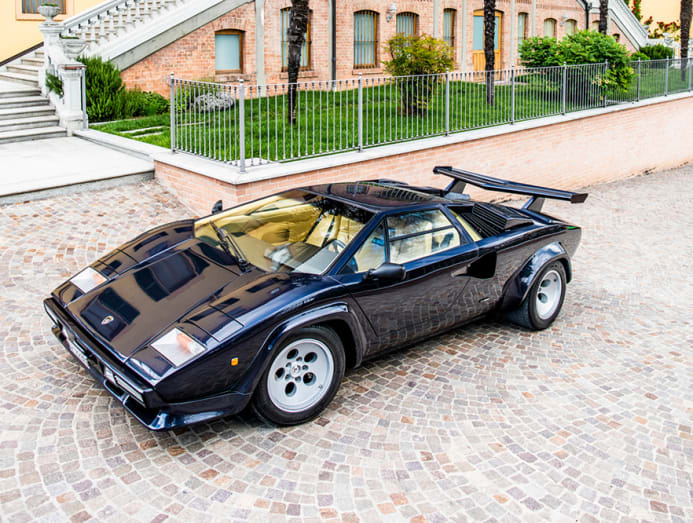
If the public thought the Miura was jaw-dropping, then its successor, the Countach, which was first unveiled to the public in prototype form at the 1971 Geneva Motor Show, must have seemed almost otherworldly.
Taking inspiration from the Alfa Romeo Carabo and Lancia Stratos Zero concept cars, the production Countach was little changed from its prototype form. Little wonder then, that its name is derived from an exclamation of surprise in the Piedmontese dialect.
Designed again by Marcello Gandini, the Countach took the boldness of the Miura and cranked it all the way up to 11. In addition to cementing Lamborghini’s reputation as the supercar of choice for the bold and flashy, the Countach also saw the debut of another Lamborghini hallmark, the scissor doors, a tradition that continues on the carmaker’s flagship models to this day.
The Countach also holds the distinction of being the longest-lived Lamborghini model, being in continuous production for a quarter-century from 1974 to 1990. Over this period, the displacement of its V12 engine increased from 3.9- to 5.2 litres, with power going up from 375hp to 455hp.
Another thing that swelled was the number of strakes, wings and flares fitted to later Countach models. The most outrageous of which was the anniversary model of 1988, created to celebrate the 25th birthday of the company’s founding.
The bodywork was courtesy of one Horacio Pagani (before he started his own car company), who would also go on to create a prototype Countach skinned almost entirely in carbon composites, a technique he would apply later on his own Zonda supercar in the late 1990s.
Of course, the reasons for its longevity weren’t entirely because of the Countach’s own merits. During the Countach’s lifetime, Lamborghini went bankrupt in 1978 and was subsequently put into receivership. Through the 1980s until its sale to Audi in 1998, Lamborghini changed hands four times, with Chrysler, Indonesian consortium MegaTech and Malaysian-Indonesian joint venture Mycom Sedtco and V’Power being notable owners during this time.
LAMBORGHINI LM002
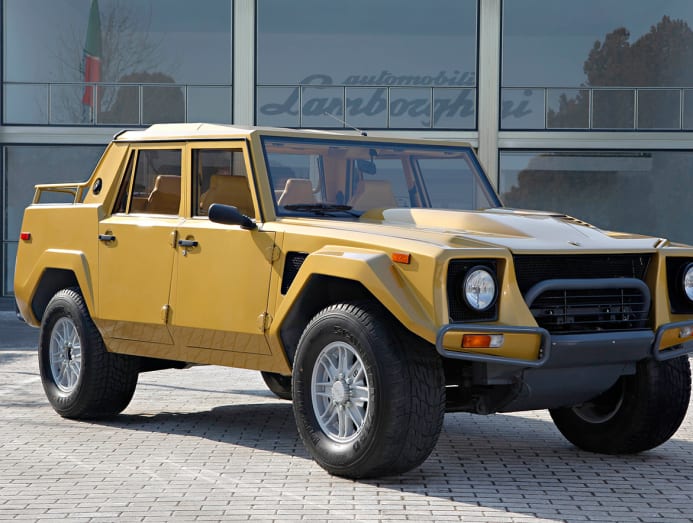
While V12s have always been fitted to Lamborghini’s supercars, there was one notable exception, the LM002, nicknamed the Rambo Lambo, produced from 1986 to 1993. To call it a car ahead of its time would be a gross understatement.
The LM002 pre-dated the idea of an SUV by at least a decade or more, making its debut in a time when the only things that rode high were off-road trucks or military vehicles, which it incidentally was. The original vision of the LM002 was that it was to be sold to military buyers or commercial concerns.
The LM002 was also well ahead of its time in that it was a luxury “truck” with the engine of a sports car. Specifically, the LM002 was powered by the 5.2-litre V12 lifted from the Countach.
The very concept of the LM002 would hardly cause anyone to bat an eyelid today, what with virtually every carmaker today having a performance SUV in its lineup. But back then, it was an oddity at best, and at worst, a betrayal of every value the company held dear.
That, along with an unholy thirst for petrol and a world racked by the recession of the late 1980s meant the LM002 never quite achieved success, with a little over 300 being sold over its lifetime.
Fast forward 30 or so years and the luxury SUV, particularly one made by a carmaker with a sporting pedigree like Lamborghini, is a red-hot item. The LM002’s successor, the Urus, accounted for some 60 percent of the 7,430 Lamborghinis sold in 2020 and is well on track to becoming the biggest-selling model in the company’s history.
You know what they say, if at first you don’t succeed…
LAMBORGHINI DIABLO
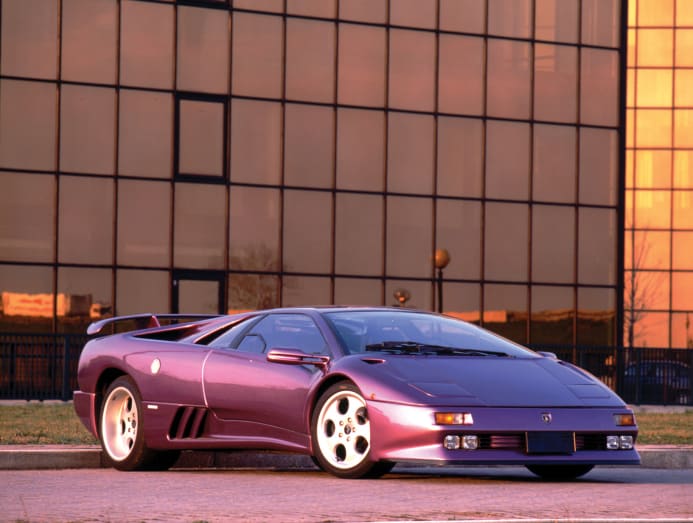
How do you create a follow-up to a smash hit? The short answer to that is: “with great difficulty”. The successor to the Countach had a bit of a troubled gestation, which resulted in a somewhat involuntary extension of that model’s lifespan.
In fact, work on the Diablo started in 1985, with the original design penned once again by Marcello Gandini. The Diablo literally went back to the drawing board in 1987 after Lamborghini was bought out by Chrysler, with an initial unveiling to the public in January 1990.
Once the Diablo hit showroom floors, it did at least not disappoint. At least, for the public. Gandini reportedly had such a cold reaction to the Chrysler-initiated redesign that he took much of the work he did on the P132 prototype and used it on the Cizeta-Moroder V16T. And if you’re wondering, yes, that’s the same Giorgio Moroder that gave us the smash hit Together in Electric Dreams.
But that’s another story for another time. The Diablo, while shorn of Gandini’s original angular looks, at least did look like a Lamborghini, with its shovel-nosed front and scissor doors.
It also went like a Lamborghini should. The V12 engine displaced 5.7 litres and developed 492hp and the Diablo in its original form was capable of a top speed of 325km/h. Three years later, the Diablo VT was introduced with an all-wheel-drive system, a powertrain that would later be employed on its successor the Murcielago and later on the Aventador.
In the intervening decade between the introduction of the Diablo and its replacement by the Murcielago, its engine was enlarged yet again to 6 litres and a hardcore, racetrack-focused GT model was introduced… And the company was sold by Chrysler to an Indonesian consortium in 1994, and then again to Audi in 1998.
Against its predecessors, the Diablo could be seen as a bit wanting, though it could be forgiven as it presents a fascinating snapshot of a company in transition. Just to give an example of that, the headlight cluster of post-facelift Diablo models was taken from the Nissan 300ZX sports car.
LAMBORGHINI MURCIELAGO
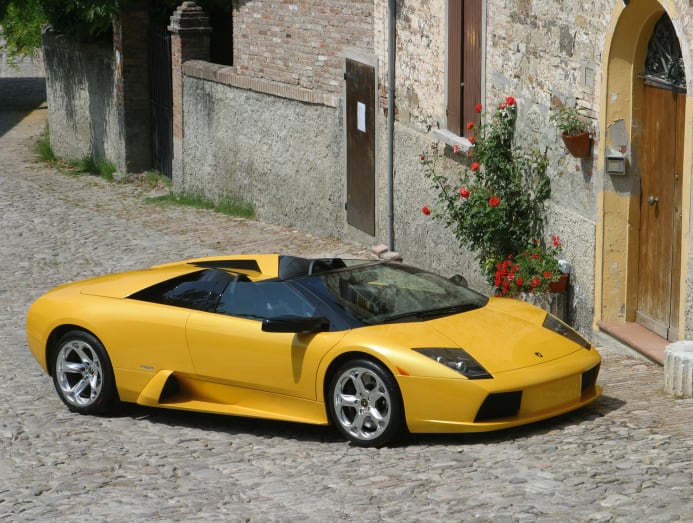
The supercar that was to lead the stable of the raging bull kicking and screaming into the 21st century rested on the broad haunches of the Murcielago. Named after the Spanish word for “bat”, the Murcielago was the first all-new model built under the auspices of new owners Audi.
If the world was worried Audi would make Lamborghini go soft, those fears would go unfounded, thankfully. Debuting in 2001, the Murcielago, brainchild of Belgian designer Luc Donckerwolke (incidentally, he’s now currently head of Hyundai design), was low-slung, angular, flashy and every inch worthy of being called a Lamborghini.
Other modern touches include a mostly carbon fibre construction and active aerodynamics that included a deployable rear spoiler and intakes on its shoulders. The Murcielago also pioneered the jet-fighter inspired design that’s so emblematic of modern Lamborghinis, the most extreme of which was the limited-edition Reventon.
The Murcielago would also be the last time the venerable “original” Lamborghini V12 would see service on its cars. By the time production of the Murcielago ended in 2010, the engine would displace 6.5 litres and develop a colossal 670hp in LP670-4 SV form.
In addition to that, the Murcielago would also be the last time a manual gearbox was offered on a flagship Lamborghini supercar. While that was met with dismay by purists, it’s not like that actually mattered to the buying public.
Exact figures are difficult to come by, but of the 4,000 or so Murcielagos made, just a tiny, tiny fraction were equipped with a manual transmission. And depending on who you ask, that number could well be in the neighbourhood of around 100.



